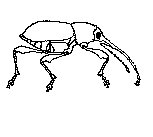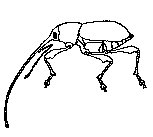NeoClassical Obscurities
A difficult poem:
Lope de Vega
Soneto CXXXIV
De los Inventores de las Cosas
Halló Baco la parra provechosa,
Ceres el trigo, Glauco el hierro duro,
los de Lidia el dinero mal seguro,
Casio la estatua en ocasión famosa.
Apis la medicina provechosa,
Marte las armas y Nemrot el muro,
Scitia el cristal, Galacia el ámbar puro,
y Polignoto la pintura hermosa.
Triunfos Libero, anillos Prometeo,
Alejandro papel, llaves Teodoro,
Radamanto la ley, Roma el gobierno,
Palas vestidos, carros Ericteo,
la plata halló Mercurio, Cadmo el oro,
Amor el fuego y Celos el infierno.
My translation is not line-by-line but invention-by-invention, for clarity:
- Bacchus discovered the useful/profitable vine,
- Ceres wheat,
- Glaucus hard iron,
- the Lydians insecure money,
- Cassius the statue on a well-known occasion.
- Apis useful/profitable medicine,
- Mars weapons,
- Nimrod the wall,
- Scythia glass,
- Galatia pure amber,
- and Polygnotus beautiful painting.
- Liber triumphs,
- Prometheus rings,
- Alexander paper,
- Theodorus keys,
- Rhadamanthus laws,
- Rome government,
- Pallas [Athena] clothes,
- Erectheus chariots/vehicles,
- Mercury discovered silver,
- Cadmus gold,
- Love fire,
- and Jealousy Hell.
The structure is clear enough: a list of ancient inventions leads up to a witty twist in the last line. However, there are some puzzles along the way:
- Why is provechosa ("useful, profitable") repeated in lines 1 and 5? It seems inept, or at least insufficiently pointed.
- Why are Bacchus and Liber listed in lines 1 and 9 as if they were different gods?
- Most important, where did Lope get some of these identifications? Ovid's Ibis is obscure enough: this poem seems even more opaque. Some of course are easy: 1, 2, 4, 7, 11, 16, and 17. Some I have read elsewhere, though I wouldn't be able to quote a source without research: 8, 11, 13, and 19. Some take a bit of thought: no doubt Pallas is the inventor of clothes (18) as goddess of weaving. But close to half are very puzzling. Who is this Cassius who invented statues (5), and why was the occasion famous? Which Glaucus invented iron (3): the henchman of Sarpedon, the owner of the man-eating horses, the short-lived son of Minos, the one who jumped into the sea and became a god, or some fifth man of the same name? Did Alexander the Great invent paper (14), or was that some other Alexander? What Theodorus invented keys (15)? And when and how did Mercury discover silver (20) and Cadmus gold (21)? It's all very puzzling, though the language is quite straightforward.
Posted by Michael Hendry at
06:43 PM
|
Comments (1)



